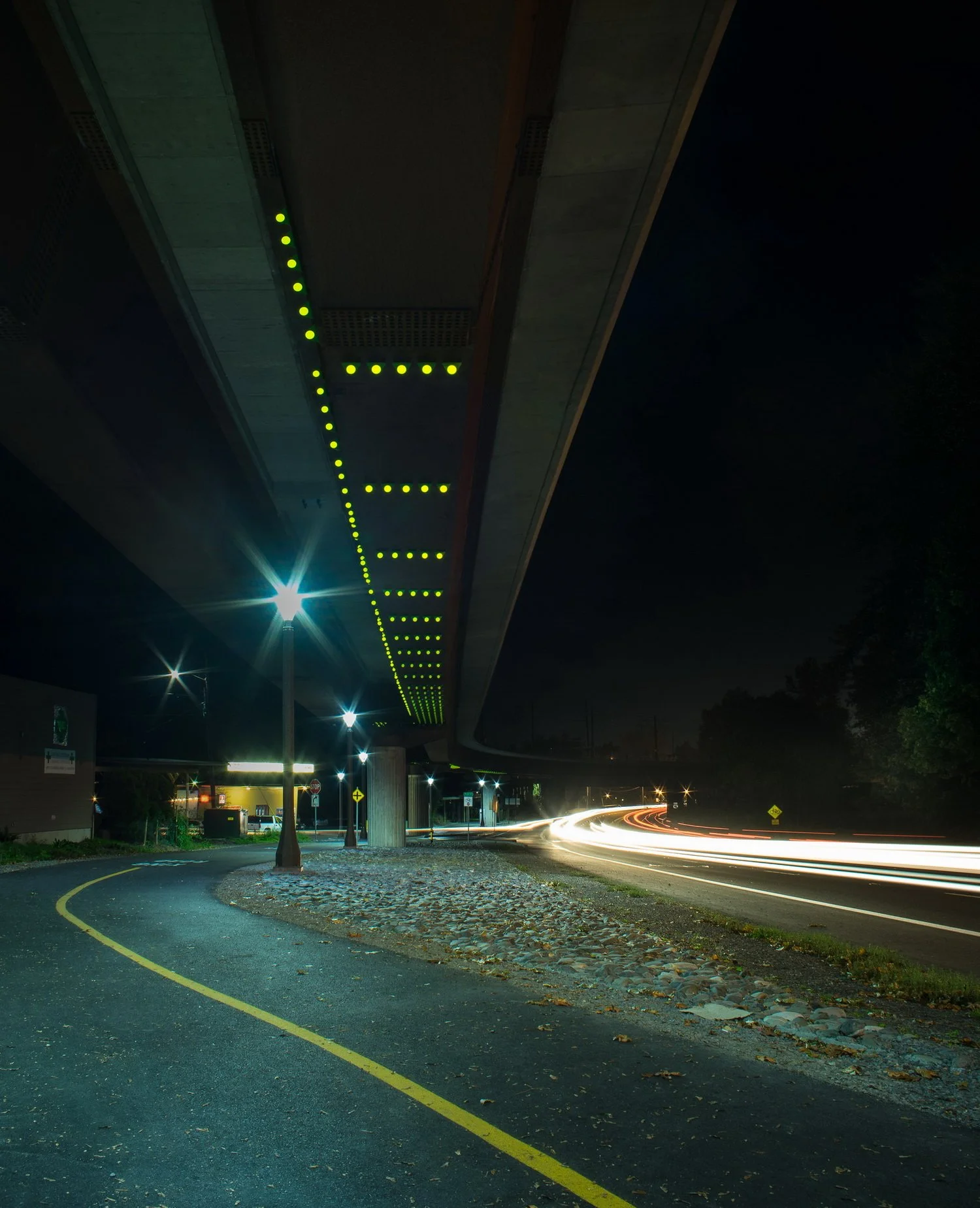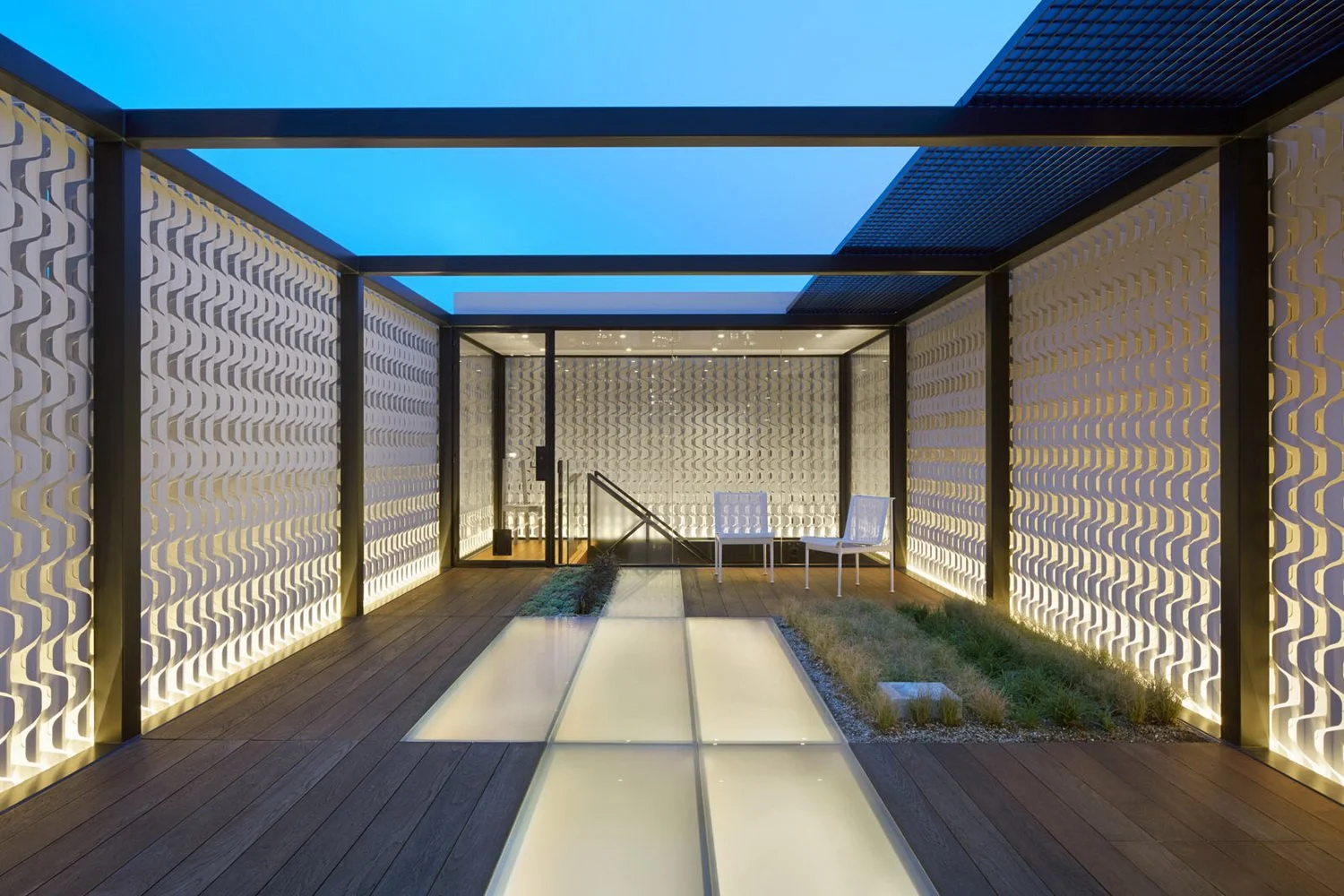Work
A 100-foot parametric installation built by CCA faculty and students — interlocking ribs, adaptive scripts, and two weeks of organized flux.
A 1,700-foot field of light beneath a bridge, Flow-Zone maps the invisible currents of the city. Two thousand green aluminum fins ripple across the underside of TriMet’s Orange Line overpass, turning traffic, wind, and light into a continuous motion field.
Rather than inserting a new object, the work extended the building’s own logic—where light paths became structural paths and textile filtration became architectural pattern. The intervention operated through continuity, not contrast: a method that joined languages rather than replacing them.
aligning sensory effects with the natural effects of a place.
A continuation of our El Cerrito del Norte commission, folded aluminum panels extend the building’s design language without imitation. Using the same fabrication logic, they provide durability and visual depth while preserving the singular impact of the main artwork.
project stories
When funding dipped, we built; when visibility surged, we learned. A process tuned to its own rhythm—turning pauses into propulsion and exposure into design.
A civic artwork built inside the very vessel meant to contain it. Covid closures forced a pivot offshore, where the rainscreen panels were flat-packed for shipping. Yet the design called for dimensionality — a bottle assembled inside a ship. Reflective Fresnel-like pieces were hand-folded in Grass Valley, while offshore crates delivered the flat system. In the building’s own basement, the work was staged, sequenced, and finally lifted into place.
Each project begins onshore—where the act of making clarifies the language that will later travel.
prototyping at arms reach
When funding dipped, we built; when visibility surged, we learned. A process tuned to its own rhythm—turning pauses into propulsion and exposure into design.
A civic artwork built inside the very vessel meant to contain it. Covid closures forced a pivot offshore, where the rainscreen panels were flat-packed for shipping. Yet the design called for dimensionality — a bottle assembled inside a ship. Reflective Fresnel-like pieces were hand-folded in Grass Valley, while offshore crates delivered the flat system. In the building’s own basement, the work was staged, sequenced, and finally lifted into place.
Each project begins onshore—where the act of making clarifies the language that will later travel.









